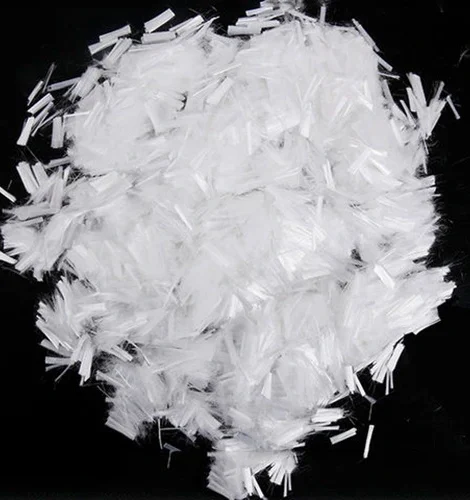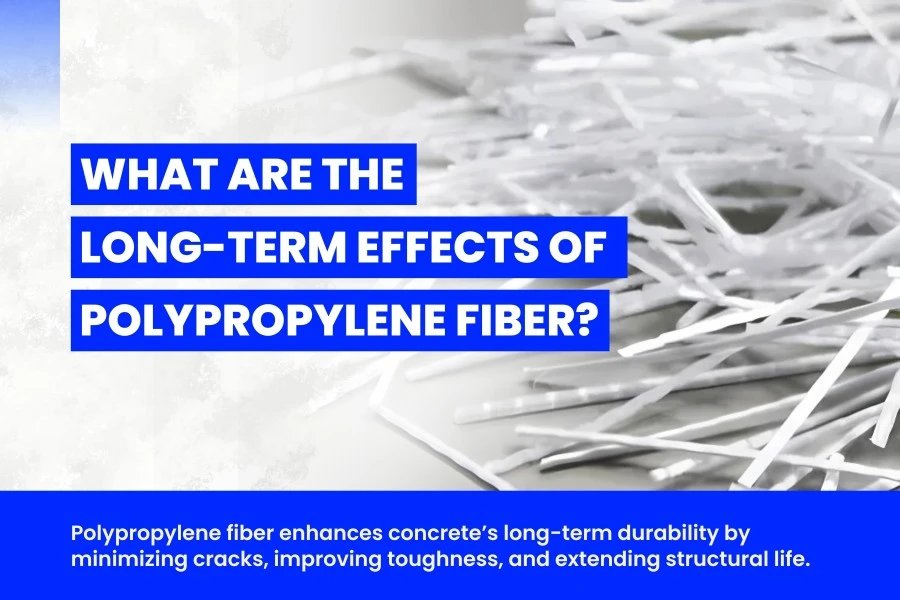Polypropylene fiber is now one of the most abundant synthetic materials around the world. It is made from propylene monomers that are combined and spun into a fiber.
It is light-weight, strong, and extremely customizable; you can find it in food packaging, textiles, medical implants, and construction products. Its durability and low cost have made it a favored item in industry after industry and service after service!
Table of Contents
With all of the excitement about continued uses for polypropylene fiber comes the conversation about long-term effects of polypropylene fiber. After years of use, what does polypropylene fiber become?
What are the consequences to the environment, human health, and economy? We will consider polypropylene fiber’s more consequential uses and why we should consider less consequential uses.
1. Environmental Consequences of Using Polypropylene Long-Term
Polypropylene’s environmental consequences are well documented, but the most important areas of concern revolve around waste, pollution, and sustainability.
a. Polypropylene Fiber does not Break Down Easily.
Polypropylene’s resilience to degradation is a great feature for product performance, but a significant challenge for waste disposal. Polypropylene is not biodegradable in environmental conditions that we traditionally think of as influencing biodiversity and degradation.
Once it has been thrown away, it can persist in the ecosystem for hundreds of years, accumulating in landfills, waterways, and natural habitats. This long duration contributes to persistent pollutants in the environment and damages ecosystems.
b. It Can Become Microplastics Over Time
Polypropylene doesn’t biodegrade, but it does break down physically into smaller pieces and eventually microplastics. This occurs through exposure to sunlight, friction, or being ground.
Microplastic pieces migrate into oceans, rivers, and soil, where they can be easily consumed by fish and animals. These potentially can have downstream impacts on potential sources of food and humans.
Research is ongoing to establish long-term ecological impacts on ecosystems, but early studies show potentially severe impacts on wildlife and humans.
c. Recycling Isn’t as Easy as It Sounds
Though polypropylene is a recyclable polymer, most won’t ever be recycled, despite the fact that it can be. Contaminated with food or other materials, sorting costs, and limited recycling facilities mean that most of the polypropylene makes it to the landfill.
After decades of aggregated waste, it can mean preserved natural resources have been depleted, and increased greenhouse gas emissions from another cycle of manufacturing.
2. How Polypropylene Affects Human Health Over Time
Given the extensive range of applications using polypropylene and the frequency of use, it is rational to examine health implications.
a. Use in Medicine Can Have Risks
The medical community has noted that polypropylene is biocompatible. It is used in surgical meshes, sutures, and permanent implants.
Medical use, particularly long-term implantation, has in a few cases resulted in inflammation, formation of scar tissue, and device failure, among other long-term issues.
Although these occurrences are quite rare, the key point is that human use of polypropylene has only begun to be documented, and there is still plenty of systematic review needed and innovation to come in terms of safer alternatives for a growing illicit medicinal device market.
b. Microplastics – Additives in Online Consumer Products
Several consumer products on the market contain polypropylene fibers, such as carpets, clothing, and packaging. These fibers shed microplastics, which can potentially be inhaled or ingested through normal use, but the health consequences are under study.
Some indicative initial research has suggested that chronic exposure to microplastics might have impacts on the respiratory system, immune system, as well as other chronic health impacts.
3. Industrial and Economic Considerations
Polypropylene has let many industries flourish due to its cost, strength, and viability for a number of applications. Again, this dependence comes with its long-term obligations.
a. Built to Last—and That’s a Double-Edged Sword
Polypropylene is the common choice for manufacturing in many applications in the construction, automotive, and packaging industries because of its chemical, water, and wear resistance.
Its longevity means replacing and maintaining products is infrequent, leading to cost effectiveness, at least in the short term, because fossil fuel still has to be used to produce polypropylene.
The long-term calculation of its cost on the environment is significant through direct and indirect negative contributions to CO₂ emissions and energy consumption.
b. Change Is Coming
With businesses growing increasingly concerned about the environmental consequences of polypropylene, a significant motivator towards sustainability, many businesses have begun exploring alternatives such as bioplastics, recycled fiber solutions, and plant-based materials options.
As technology continues to improve, it will allow us to expect even more transitioning to circular systems (where materials can be reused or repurposed instead of dumped).
c. Economic Reliance Can Be a Risk.
Due to its low cost and simple use, many industries rely heavily upon polypropylene. However, that would clearly represent a significant risk if regulations increased or resources ran low.
If restrictions regarding using polypropylene increased due to the evolution of policy or environmental movements, many businesses would likely be economically disrupted unless they had made a transition to alternative materials.
4. Social and Ethical Implications
The long-term implications of polypropylene will extend beyond science and into consumer behavior, ethics, and public policy.
a. Changing Consumer Behavior
As awareness of plastic pollution and sustainability grows, consumer preferences are shifting. Consumers are increasingly looking for recyclable products; companies are now forced to rethink their design and production of products.
Polypropylene-based products will most likely not last, and consumers will choose companies that offer greener choices.
b. The Paradigm of Policy and Regulation
Government policy worldwide has cracked down on single-use plastics and increased support for recycling. If successful, these efforts could decrease the environmental impacts of polypropylene fiber over the long term.
Successful “regulations” will require public funding for better waste infrastructures, consumer education to recycle better, and educating businesses to responsibly innovate.
5. Technological Developments as a Solution
If polypropylene is to have a future in a sustainable world, it will likely rely on innovation in science and engineering.
a. Better Processes for Recycling
Typically, polypropylene is poorly recovered in recycling streams. Newer technologies such as chemical recycling and advanced sorting systems, may have new potential to close the loop.
New material and recycling technologies, as well as preliminary designs, may allow recovery of polypropylene at higher purity and efficiency levels, diverting material and prolonging material life cycles.
b. Sustainable Substitutes Are on the Horizon
A resurgence in interest and funding for bio-based polymers and fully compostable alternative materials is occurring. Some new materials currently outperform polypropylene, but will perform after use will decompose naturally.
With more funding, these new green alternatives have a great chance of not only competing but replacing the same applications as polypropylene, from textiles to food containers.

Conclusion
It is clear that polypropylene fiber has changed, and will continue to change, many industries such as hospitality, apparel, footwear, home decor, and construction because of its convenience, durability, cost-effectiveness, and versatility.
However, its legacy transition for everyone, the environment, and the economy is more complex than a single corner of a single industry.
Ultimately, polypropylene fiber does not need to be the villain in the plastics saga, much like the future of sustainability does not need to depend on environmentally responsible interventions that impact our thoughts, actions, and considerations towards polypropylene product,s rather than consider it simply profit or waste nabbed from the disposable bottom line.
By maturely prudently embracing innovation, sustainability, and circularity, we can responsibly, and responsibly, move toward a world where we can benefit from the abundant advantages polypropylene fibers impart but yet not disrupt life on earth itself.


